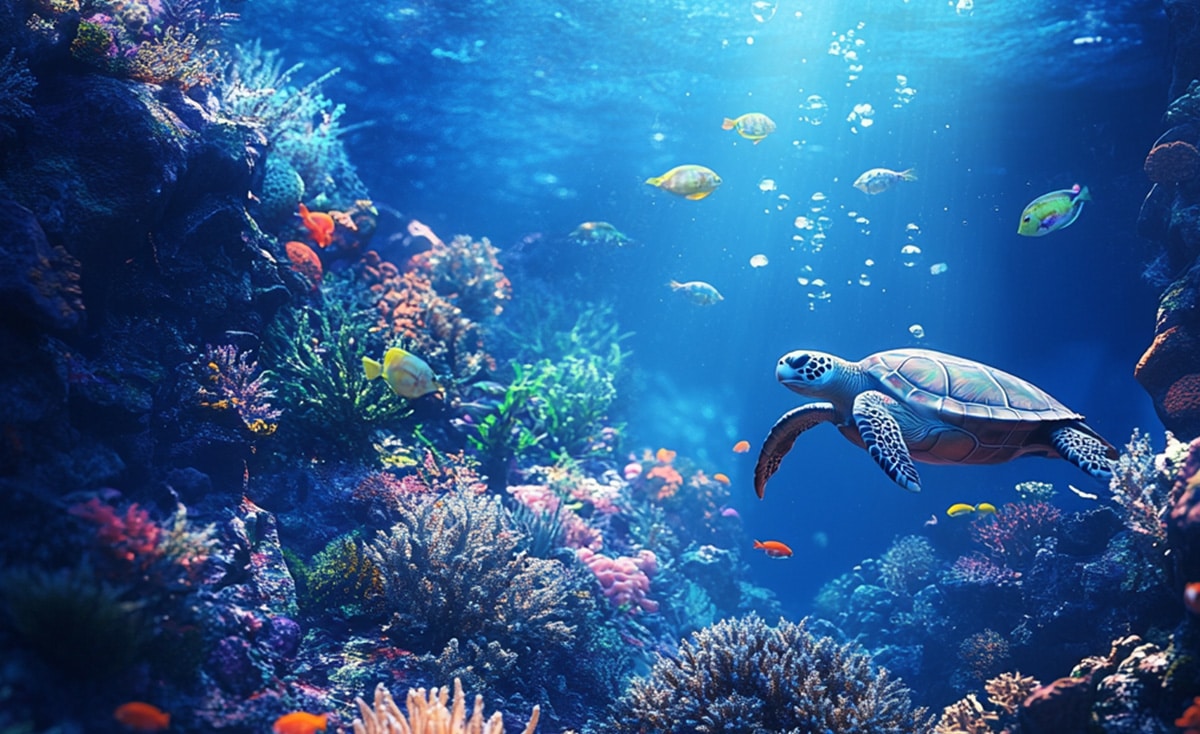
Following the conclusion of the high-level 2025 United Nations Conference to Support the Implementation of Sustainable Development Goal 14 (UNOC) in France last week, our focus at formula D_ remains aligned towards ocean conservation. Marine Protected Areas (MPAs) aren’t just lines on a map or exclusionary zones; they are biodiversity hotspots that need to be protected, and their health is intrinsically linked to our own. As a team, when we were reading about the theme and objectives of UNOC, we found ourselves asking “Will MPAs receive enough attention?”.
What Are Marine Protected Areas (MPAs) and Why Do They Matter?
So, what exactly are MPAs? Think of them as dedicated sanctuaries within our vast oceans – game reserves in the sea that are legally designated coastal and/or ocean regions managed with the singular purpose of safeguarding marine habitats, ecosystems, species, and their natural ecological processes. Here in South Africa, we’re incredibly fortunate to be a marine biodiversity hotspot, boasting nearly 13,000 identified marine species, with almost a third of them unique to our waters, giving us the third highest rate of marine species endemism globally. As of 2024, South Africa has 42 Marine Protected Areas – covering 5.4% of our national coastal waters. This does not sound like a lot, but this number was just 0.43% before 2016!
The Critical Role of Marine Protected Areas in Ocean Health and Sustainability
For us, the conservation value of MPAs is undeniable. They are essential tools for protecting vulnerable habitats, ecosystems, environmental processes, and ocean biodiversity. They are critical for managing marine resources sustainably. If we didn’t have MPAs, or if their management faltered, we would witness a significant deterioration of our ocean’s biodiversity hotspots, which would ultimately have a big impact on our economy.
Without MPAs, the risk of unregulated fishing would increase, placing vulnerable fish species at greater risk. The Benguela shelf edge represents 5% of South Africa’s ocean space, but 90% of our sea food is caught in this space.
The ocean’s ability to mitigate climate change is already under strain from warming, acidification, eutrophication, and deoxygenation. Without MPAs, we risk losing these natural safeguards, jeopardizing the delicate balance of the “ocean-climate-biodiversity nexus”.
How MPAs Inspire Conservation Through Education and Immersive Experiences
One aspect of MPAs that truly resonates with us is their potential as living classrooms. Even though most of South Africa’s MPAs lie offshore, those that lie within coastal regions, like Tstistikamma Coastal National Park, iSimangaliso Wetland Park and others, offer
unparalleled opportunities for environmental education, awareness, and interpretation, enabling people of all ages to connect with nature. Although not classified as an MPA, one of the best biodiversity classrooms in the world is the intertidal zone, which stretches along our entire 3 000+ km coastline.
To help us understand the MPAs that are more inaccessible, science-based experience design can bring us closer to these environments.
At formula d_, our focus (and responsibility) lies in science-based experience design for conservation. The power of immersive and interactive experiences can translate the complex science of ocean ecosystems and biodiversity into personally resonant experiences. The goal is to create a deeper understanding of the critical role of the ocean environment and a desire to take action in some way.
For example, our work with Mindoro Ocean Heart in the Philippines, was designed for this exact intention – to encourage visitors to take meaningful action in their daily lives. At the heart of this experience lies a deeply emotional and interactive journey into the underwater world of MPAs within the Mindoro Island region of the Philippines. Through a series of multisensory, photogenic spaces, such as the glowing Coral Reef Caves, an oversized Clam House, and the ethereal Jellyfish Bloom, visitors are immersed in the beauty and fragility of Mindoro’s marine ecosystems. We believe that by immersing people in the wonders of ocean ecosystem in this way, we can inspire a genuine sense of stewardship.
Furthermore, studies have shown that exposure to nature during formative years can lead to a lifelong commitment to environmental care. Understanding this has formed our belief that effective ocean conservation requires a dual strategy. It needs both direct citizen engagement through meaningful experiences and strengthening the science-policy interface while integrating both traditional and modern knowledge into ocean policies.
Challenges Facing MPAs: Fishing, Mining, and Deep-Sea Threats
Our oceans, especially their deeper, less explored regions, hold wonders and secrets that continue to astound us. Dr. Kerry Sink of South African National Biodiversity Institute (SANBI) often shares fascinating insights from these depths through the use of remote-operated submersibles, revealing unique life forms that play critical roles in the marine ecosystem. For example, there are single-celled animals called foraminifera, once thought extinct, that secrete intricate shell -There is gelatinous network of tubes that has yielded the most effective anti-cancer compound ever tested and act as vital nursery habitats where fish can find shelter.
Despite their immense value, these precious offshore environments face significant pressures. South Africa has a century-old trawl fishery, crucial for food and jobs, but we know its activities impact fragile marine organisms likemany fish species vulnerable. Beyond fishing, mining in our seascape also poses a threat. Studies on diamond mining impacts reveal that the deeper the operations, the longer the seafloor takes to recover. A significant concern is the impact of emerging deep-sea mining technologies on special ocean places, which are unlikely to be compatible with these unique environments.
So, what should we do? According to Dr. Sink, MPAs are crucial for building resilience against climate change and other pressures, helping to secure the last remnants of ecosystems that have been severely impacted. We must also strategically manage the most productive areas of our ocean like the Benguela shelf edge. Maintaining these areas is vital to ensure that is a sustainable way.
Why UNOC 2025 Must Prioritise Marine Protected Areas with Actionable Commitments
The upcoming UNOC 2025 provides a vital platform to solidify concrete political commitments to address these challenges. At formula d_ we believe that it is imperative that we not only endorse the 30×30 Initiative – aiming to effectively conserve and manage at least 30% of marine and coastal areas by 2030 – but also ensure that these areas are truly effectively managed. This means advocating for adequate funding, developing and implementing robust management plans, strengthening law enforcement capacity, and fostering greater public awareness. Our hope is that the conversations at UNOC translate into tangible, measurable improvements in the oceans, and that direct public engagement is discussed, whether that be through conservation centres or eco-tourism experiences. For us, the ocean is not just a resource; it is a shared responsibility, and ensuring the health and resilience of our MPAs is a responsibility we must all embrace.



